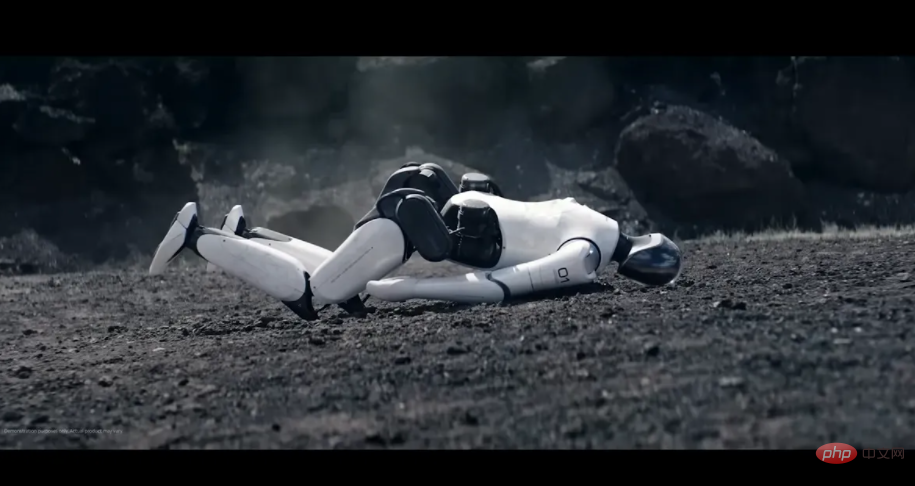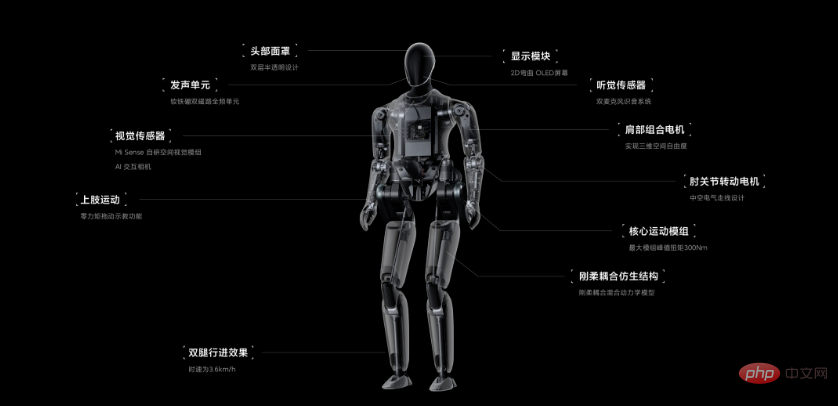Home >Technology peripherals >AI >Xiaomi's 'Tieda” robot, which would fall down even when walking, finally learned how to play drums, and seems to be doing pretty well?
Xiaomi's 'Tieda” robot, which would fall down even when walking, finally learned how to play drums, and seems to be doing pretty well?
- WBOYWBOYWBOYWBOYWBOYWBOYWBOYWBOYWBOYWBOYWBOYWBOYWBforward
- 2023-04-12 23:52:012229browse
Big Data Digest Produced
A few months ago, when Xiaomi announced the launch of the “iron big” CyberOne humanoid robot, it wasn’t entirely clear what Xiaomi intended to do with the robot. Do something.
The speculation is that Xiaomi will not say that "Tieda" will have some practical use now, but will use it as a way to explore the possibility of migrating to Practical application techniques elsewhere.
Surprisingly, Xiaomi’s robotics experts have begun to teach robots to do things that, if not very useful, are at least eye-catching – such as playing drums.
From falling down when walking to learning to play the drum by myself
The score played is actually a MIDI file input to "Tieda" , Tieda was able to parse it into a beat that could be played.
It then creates a series of coordinated movements of the whole body that are synchronized with the music, so that the end limbs have to ensure that the drums move accurately to the beat.
"Tieda" has done quite well in this regard. Perhaps this may not be ultra-cutting-edge humanoid robot research, but it’s still interesting to see what companies like Xiaomi are exploring in this area.
The technical difficulty of this project is that when receiving a long sequence of drum beats, "Iron Da" needs to assign a sequence to each arm and leg and generate a continuous sequence under hardware constraints. Collision-free full body trajectory. Therefore, researchers need to extract basic beats and build a drum motion trajectory library offline through optimization. "Iron Big" can then produce continuous tracks that fit any drum score.
This approach provides Tieda with more freedom in drumming, with the level of performance limited only by the capabilities of the robot’s technology.
Compared to the "iron big" who would fall down even when walking a few months ago, it is obvious that he has made great progress in terminal control.

The latest progress of "Iron Big", why do you want to demonstrate it through drumming?
Senior hardware engineers from Xiaomi Robot Lab also accepted media interviews on this project.
First of all, he talked about why Xiaomi would develop the "Iron Big" robot. This includes three reasons:
- The first reason is that Xiaomi saw The labor force in China and around the world has declined significantly. Although there is still a long way to go, we are well on our way to replacing the human workforce with humanoid robots.
- The second reason is that Xiaomi believes that humanoid robots are the most technically challenging of all robot forms. Through its research on humanoid robots, Xiaomi can also use this technology to solve problems in other robot forms, such as quadruped robots, robotic arms, and even wheeled robots.
- The third reason is that Xiaomi wants to be the most technologically advanced company in China, and humanoid robotics technology is sexy.
As for the reason why they chose drumming to demonstrate their research during this process, the engineer said that after Xiaomi’s “iron big” CyberOne was officially released on August 11 After that, we got a lot of feedback from members of the public who didn’t have a robotics background. They're more interested in seeing humanoid robots do things humans can't easily do.
Honestly, it’s hard to find such a scenario, because everyone knows that the first prototype will definitely lag far behind humans. But one day, one of the engineers on the team who was just starting to learn how to play drums suggested that drumming might be an exception. She believes that compared to novice drummers, humanoid robots have advantages in coordinated hand-foot movement and rhythm control. After hearing this, the team members thought it was a good idea, and drumming itself is cool and interesting, so the team decided to choose drumming to showcase Tieda’s latest progress.
The engineer also revealed that they are currently developing the second-generation "iron giant" CyberOne, hoping to further improve its movement and operation capabilities. At the hardware level, there are also plans to add more degrees of freedom, integrate self-developed dexterous hands, and add more sensors. At the software level, more robust motion and vision control algorithms will be developed.
The birth of “Iron Big”
On August 11, Xiaomi’s autumn new product launch conference was held in Beijing. In addition to Xiaomi MIX Fold 2, Redmi Blockbuster products such as the K50 Extreme Edition were launched, and Xiaomi’s first full-size humanoid bionic robot, CyberOne, was also officially unveiled.
CyberOne is a new member of the Xiaomi robot Cyber family following last year's Xiaomi bionic quadruped robot Cyberdog. It has an internal stage name of "Tieda". It has high emotional intelligence, can perceive human emotions, and has a visual It is keen and capable of three-dimensional virtual reconstruction of the real world. It has a well-developed "cerebellum" and can achieve balanced movement and posture of both feet. It has strong limbs and has leading technical capabilities such as a power peak torque of 300Nm.

"The intelligence and mechanical capabilities behind CyberOne are all fully self-developed by Xiaomi Robot Lab. There are countless software, hardware, and algorithm development work behind it, with huge investment." Founder, Chairman and CEO of Xiaomi Group Lei Jun said that CyberOne uses artificial intelligence as its core and a standard humanoid as its carrier. It is Xiaomi's exploration of the future technology ecosystem and a new achievement of Xiaomi's multi-faceted integration technology system.
CyberOne is a true full-size humanoid bionic robot with a height of 177CM and a weight of 52KG. Compared with bionic quadruped robots, humanoid robots are more mechanically complex and require more powerful motors, more degrees of freedom in the body, and complex humanoid bipedal control algorithms. This time CyberOne supports up to 21 degrees of freedom and can achieve 0.5ms level real-time response for each degree of freedom, which can fully simulate various human actions.
Related reports:
https://spectrum.ieee.org/humanoid-robot-xiaomi-cyberone
https://spectrum. ieee.org/xiaomi-robot-drummer
https://mp.weixin.qq.com/s/V5AjnZEBPL5oTBleLsgZ_w
The above is the detailed content of Xiaomi's 'Tieda” robot, which would fall down even when walking, finally learned how to play drums, and seems to be doing pretty well?. For more information, please follow other related articles on the PHP Chinese website!
Related articles
See more- Technology trends to watch in 2023
- How Artificial Intelligence is Bringing New Everyday Work to Data Center Teams
- Can artificial intelligence or automation solve the problem of low energy efficiency in buildings?
- OpenAI co-founder interviewed by Huang Renxun: GPT-4's reasoning capabilities have not yet reached expectations
- Microsoft's Bing surpasses Google in search traffic thanks to OpenAI technology

